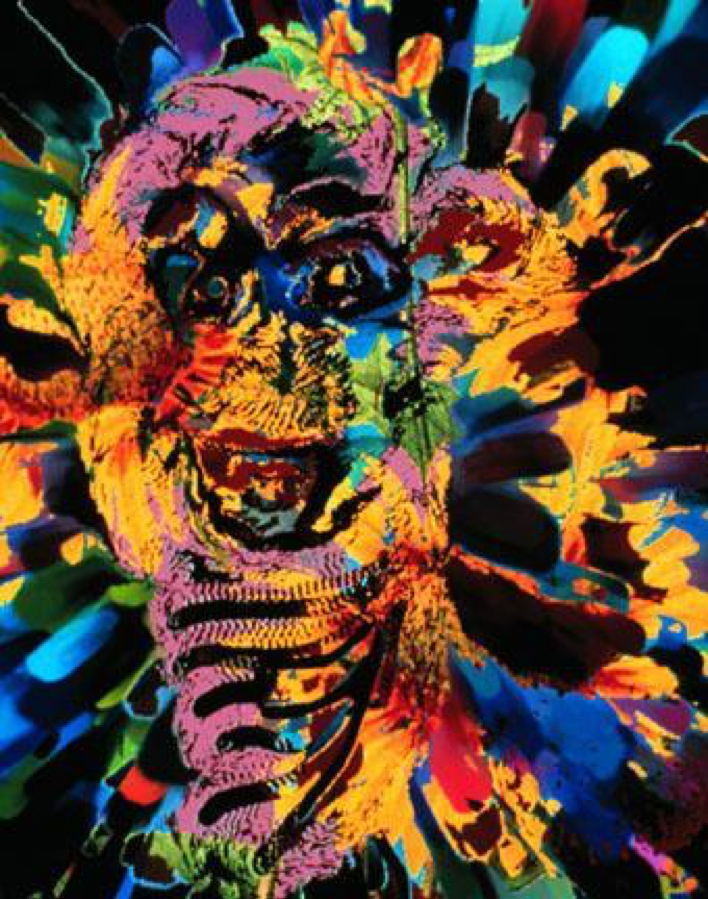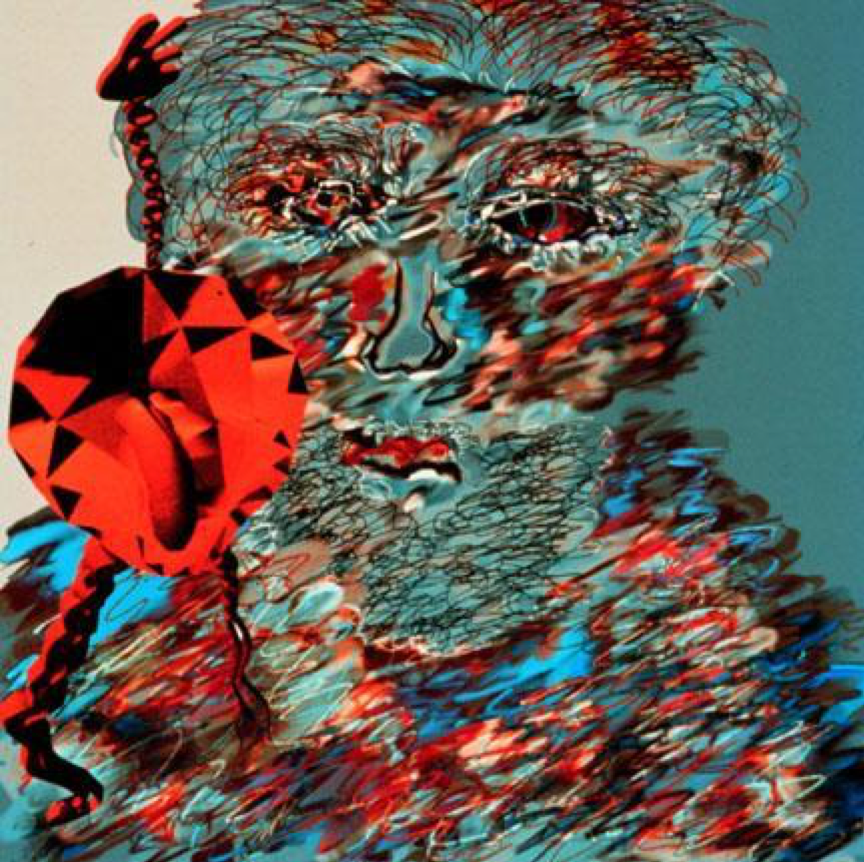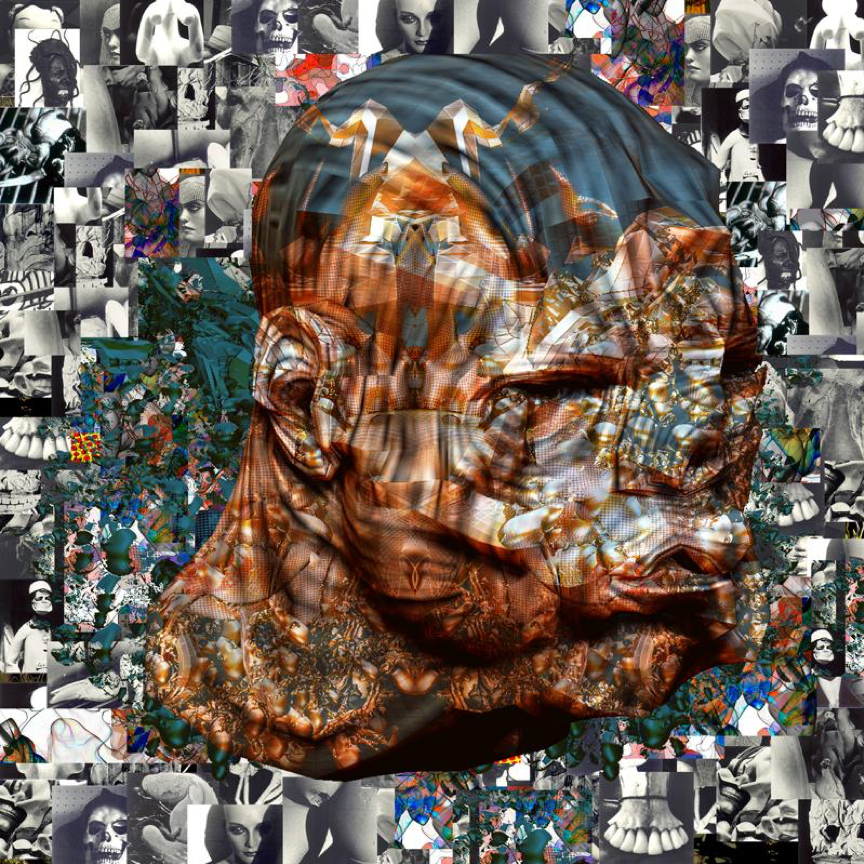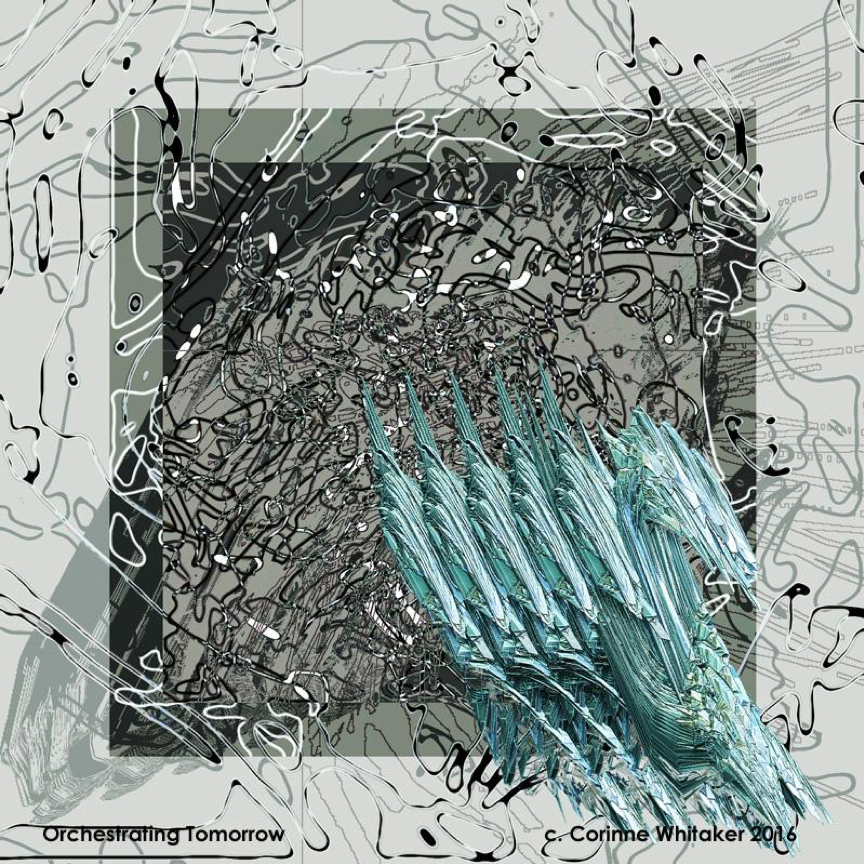LILA: You have been a true trailblazer in all aspects of your life – from rebelling against orthodox social ideas in your youth to launching many professional innovations. How do you find this vision, to go beyond what is expected, whether in the work space or in your personal life?
Corinne Whitaker: Expectations in my personal life were always beyond what I could attain, and if I reached them the goal was only moved further. It took me a long time to understand that these were people who did not want to be pleased; indeed they were intensely threatened if I did somehow succeed. It was not a lack of love on their part, but an issue of control. Since I had been taught to set my own goals very high, it was a losing battle. I had to learn, to distance myself – as Swinburne said, “from hope and fear set free.” My fierce love of living, of adventure, of exploration, frightened some major figures in a major way. I could not change others. I could only free myself. I think also that knowing an earlier child had died in a miscarriage made me determined not to die in utero; to be a survivor.

LILA: In your memoir, ‘Unfolding’, you talk about your cultural and social background that did not give women an equal voice in society. How did this influence your work in the early days? How does this history as well as contemporary politics continue to influence your work?
Corinne Whitaker: The more I study, the more I look closely at both history and contemporary society, the more I realise how women’s voices have been silenced. They have been written out of history, made nonexistent, by a powerful patriarchy. Much of the anger and distress that we see around the world comes from a so-called “white” male power structure that sees its pre-eminence dissolving as minorities like women demand their rightful place at the decision-making table. Just as a tiny example, how many women artists have had significant biographies written about them? How does the male power structure in the publishing industry prevent women writers from being published or being submitted for major literature awards? In art, how often are women seen as objects of the male gaze? Men define how society sees us and, sadly then, how we see ourselves. In visits to kindergartens it is appalling how many little girls are taught to wait passively for a knight on a white horse.

LILA: Has your method of art making or creative expression acted as a channel for your own voice, to speak out against the subjugation?
Corinne Whitaker: Rather as a channel for other voices clamouring to be heard. In some unknown way, individuals like myself have been blessed/burdened with the gift of opening our eyes to truths that need to be acknowledged. There are times when I feel like a vessel for universal soundscapes, the sounds of beauty in its multiplicities, for example, of fears we would rather hide from ourselves as well as others. The cries of the unloved, the tears of the under-appreciated. The glories of the gifted along with the horrors of the mistreated.

LILA: Can you tell us about your artistic processes – how did your various interests from digital art and photography, to poetry and philosophy come together? What insight has this given you into engaging with both the content and form of art?
Corinne Whitaker: I love learning. It leads me to explore, to peek around corners, to question what might be/could be. I do not fear tomorrow. I fear what we are doing to ourselves and our planet today. Humans are brilliant innovators. Humans are also vicious destroyers.
As a young girl growing up in the mid-1900’s I felt the constriction of the few choices offered: essentially, take a secretarial job while you are looking for a husband. There was only one public high school in my hometown. It had been explicitly told not to encourage its seniors to apply to the top colleges because the students weren’t good enough. I knew where I wanted to go, and spent endless hours studying in our attic to bring myself up to speed. Then, of course, there were religious limitations, unwritten but clearly in effect (We only take 10% of “those”). Education at an outstanding women’s college taught me the value of inquiry, of how to ask difficult questions and search for answers. I was fortunate to be exposed to brilliant teachers, primarily and ironically men, whose encouragement was essential to my intellectual growth. To this day I regret that my thesis advisor died before I could show him how influential he had been. But the only career choice offered was in academics. And the social environment was restrictive: a friend who got married was not allowed to live in a dormitory because she might taint innocent young minds (her husband was working out of the country). Another friend stopped wearing lipstick because her Harvard boyfriend demanded it. Dates had to end by 11 pm, with a single 1 am permitted each week. Our class wanted to invite Ralph Bunche, recipient of a Nobel Peace Prize, to be our commencement speaker. The college refused to allow us, because parents from states like Mississippi would refuse to attend.
I was being told “no” while I was searching for “yes”. Why can’t I? – that question haunted me. (My Father used to say, if you want her to use a spoon insist that she use a fork!)

I do not think in terms of a dichotomy between content and form in art. Something cries out to be heard. All forms of expression flow from that. I am allergic (if that’s the word) to labels, collections of words that tend to restrict how we think, in fact prevent us from thinking at all. The pernicious effect of labelling is being exploited in politics today. Attach a brief but inflammatory label to someone or some cause and a knee-jerk reaction occurs: oh, she or he is “one of those”. Doors close around the phrase; critical thinking stops. Why do we insist on descriptives like black artist, or female, self-taught, or Chinese? These adjectives add unnecessary overtones, preventing us from approaching art (or music, or literature, for that matter) face-to-face. Perhaps these words are meant to give us some measure of control over that still-prevalent fear of artists and art-making: what do creatives in general know/see/intuit that most of us are afraid to look at? My mother would not allow me to date an artist: they are insane, and the insanity is contagious.
LILA: What particular feature of the digital medium attracted you the most – not only were you drawn to it at a time when digital art was counter-intuitive to the popular notion of art, but through the years, you sustained your interest and developed your practice along with the advancements in technology…
Corinne Whitaker: The computer seduced me originally because no one knew how it worked. There were no answers. We didn’t even know what questions to ask. I spent hundreds of hours, literally, drawing with my dominant hand and then with my non-dominant hand on the computer to understand the differences. I made up study exercises, because there were no manuals at the beginning. There were no menus, no icons, no mouse. People taught themselves and shared what they knew with each other. I found the process exhilarating. I needed to be certain that I controlled the computer, not the other way around. In photography, when I bought a medium-format Hasselblad, I stopped taking photographs for 6 months until I was sure that I understood every aspect of that superb machine, so that I mastered it rather than it mastering me. The process that I ended up using was upsetting to others because it was uniquely my own and not in the rule books. The camera did what I wanted, and if the path I had taken was foreign to others that didn’t matter to me. Later, when I had the Digital Giraffe art gallery in Carmel, software designers would visit and say they had no idea their products could produce what they saw on my walls. They were pressured to move on to the next big thing; I had the luxury of exploring where these capabilities could take me. Before there were art programs available, I ordered some programs on thermal properties from the National Super Computing Center in Illinois. I knew nothing about thermal systems, but I would feed irrational numbers into the program to see what would happen. i.e., if an equation called for numbers between 10 and 35. I would feed in something like 249 and minus 67. Most of the time I would get a response like “Dummy! That won’t work.” But every so often I would get a gorgeous graphic. I never kept a record of the equations because I did not want to repeat myself. My software engineering friends were horrified!

LILA: Discussions about your artwork often refer to an extra-terrestrial perspective – a possibility opened up by the digital medium. How do you respond to this? How has this perspective inspired, informed and enhanced your sensibilities as an artist?
Corinne Whitaker: There are so many languages that we don’t speak: we don’t even admit they might exist. We don’t, for example, speak the language of tardigrades, of cockroaches, of earthquakes and toenails. I do not know Swahili; the Kiswahili people do not know me. Yet there is a BBC newspaper in Swahili. And the millions of people that speak Swahili fart, belch and hunger just as you and I do. Think of the unknown extra-terrestrial languages that might be beyond our reach! I only know that I know so little. Therein lies the mystery, the beauty, the angst. I think of myself as a Betaphysician, churning out ideas and images like wind-tossed tumbleweeds. Hopefully some of them will take us somewhere we have never been.
LILA: The aesthetics of your art is vivid and bold – from the colours used to the patterns designed. In your latest work, we also see some monochromatic line drawing and figures. What has been the inspiration behind these aesthetic choices? How has your aesthetic developed over the years?
Corinne Whitaker: The works lead me to unknown places. It only succeeds when I remove my ego from the process. Some artists, like architects, for example, start with a goal in mind: building a dormitory. I work best having no idea where I am going. There are voices that want to be heard, visual songs that clamour to be sung. My job is to stay out of the way and let them emerge. It is a dual process: I have to not judge, not criticise, as I create. Yet at some point my experienced eye tells me I have taken a wrong turn and need to go back. I speculate often about what other species might look like “out there”. I am convinced that the computer offers us a radical new way to understand our place in the universe, and that a new iconography of vision is required. The computer is not photography with a sex-change operation. It offers us a radical departure from Renaissance perspective: I simply want to pursue that truth.

LILA: Could you elaborate some more on this? What possibilities do computers and technology present to human innovation and aesthetics, especially in the current social, political and ecological context?
Corinne Whitaker: Computers and technology are the engines of change, of moving the species forward into unknown territories. The magnitude of these changes excites some of us, while at the same time terrifying others. I think the sense of dis-ease being felt around the world is in no small way responsible for the political upheavals occurring across the planet. There seems to be a nostalgia for a fancied earlier time, when memory, suffused with longing, paints an imagined past tinged with innocence. Things were simpler then, we seem to be saying. Yesterday was hopeful. Today is out of control. Even the scientists working in robotics and artificial intelligence admit to deep misgivings about where their discoveries might be leading. The implications for faith-based religions and evolutionary theories are truly profound.
LILA: As you mentioned before, the potential of digital media is not always explored or realised, given the focus on the “next big thing”. In the same effort, the digital media is also getting increasingly standardised, with set colour palettes, programmes and softwares without open codes. What has been your experience of finding the balance between such seeming limitations of the digital and the infinite potential of creativity by the human mind?
Corinne Whitaker: The limitations reside within the human mind, not in the technology. What we fear and do not understand makes us want to exert control. Harness the energy and we own it. Give it free rein and the possibilities terrify us. Remember that the Impressionists were reviled: Matisse was vociferously denounced as a “savage”.
LILA: Your openness to multiple media and possibilities of art is both remarkable and inspiring. It presents an important lesson about an attitude that allows one to innovate and create. How do you visualise an ecosystem of creativity that can facilitate such convergence of ideas and possibilities? What kind of training and experiences help build these faculties in people?
Corinne Whitaker: I have no easy answers for you. Perhaps respect for differences. An understanding that “ the other” is not necessarily an opponent. A touch of humility would help. An understanding that the Gods, or a God, provide sunshine to all children without asking about their religion or demanding to see a passport. A realisation that we are all seekers of a truth, and perhaps there is more than one path to joy.

LILA: What is your vision for the arts in a world where the environment is degrading and technology is overpowering humanity? What is the future you imagine, and where is the hope for organic connections in it?
Corinne Whitaker: I believe we have the potential to solve the huge challenges facing us. I also believe we are quite capable of blowing the planet and ourselves to smithereens if we don’t right the quivering ships of state around the world. Surely a species that can create magnificent oratorios and cantatas can self-correct? We have to, if any of us is to survive.
